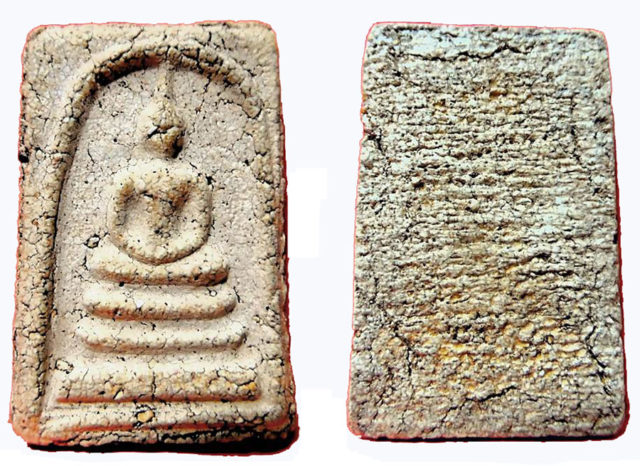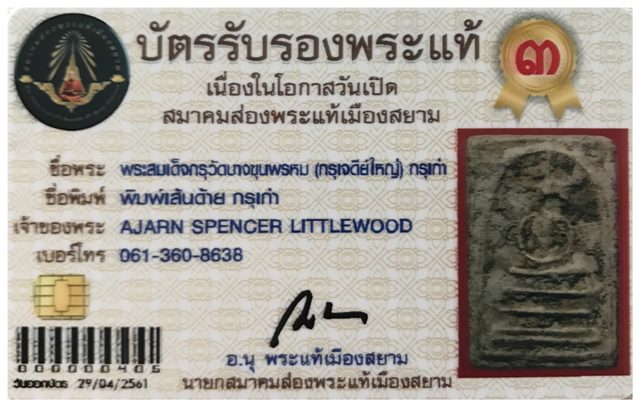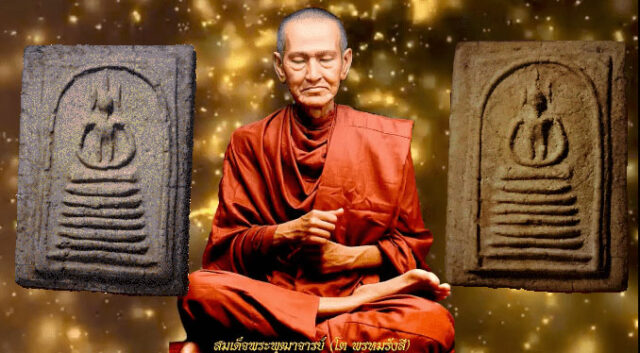
The Pra Somdej Amulet within the Benjapakee Family are classed as the Pra Somdej Wat Rakang Kositaram, Wat Bang Khun Prohm, and Wat Gaes Chaiyo Worawiharn, along with around twenty other temples classed within the Dtamra Pra Somdej, who have made Somdej amulets according to the Dtamra of Somdej Toh Prohmrangsri, and are classified within the pantheon of Benjapakee.
Different Kinds of Pra Somdej Amulets
The Three Most Famous Pra Somdej
The Pra Somdej amulets, created by Somdej Pra Puttajarn (Dto) Prohmrangsri, stand among the most revered and sought-after sacred objects in Thai Buddhism. These amulets, particularly those from Wat Rakang, Wat Bang Khun Prohm, and Wat Gaes Chaiyo, are esteemed for their immense spiritual power and historical significance.
Pra Somdej Wat Rakang
The Pra Somdej Wat Rakang amulets are arguably the most famous and highly venerated amulets in Thailand. Wat Rakang Kositaram, where these amulets were created, holds a pivotal place in the history of Thai Buddhism. Somdej Pra Puttajarn (Dto) Prohmrangsri, often referred to as Somdej Toh, crafted these amulets during his tenure at the temple. The amulets are renowned for their simplicity, elegance, and the sacred power imbued in them through meticulous rituals.
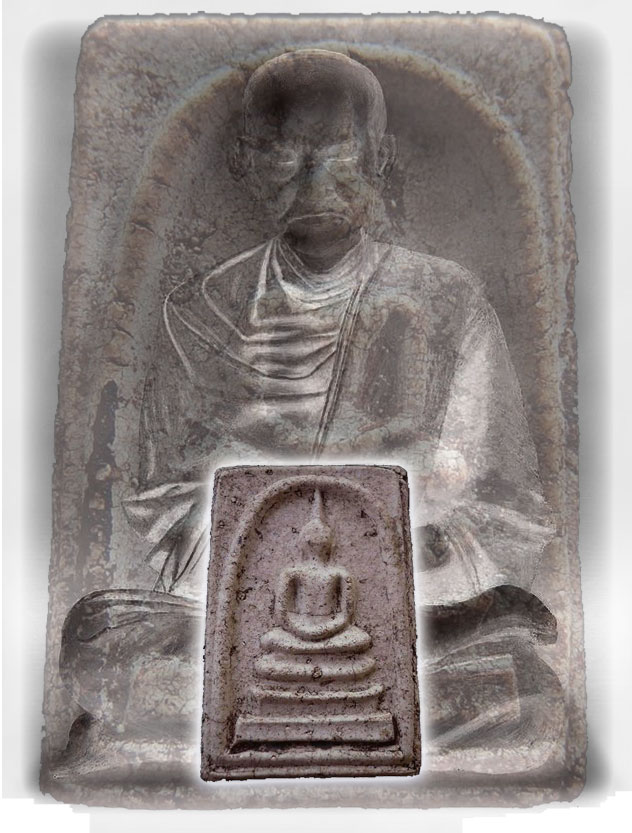
The creation process of these amulets involved a blend of sacred powders, known as “Muan Sarn,” which included various holy substances such as powdered bone relics, temple wall dust, and sacred herbs. These materials were carefully selected and blessed to ensure the amulets’ spiritual efficacy. The hallmark design of Pra Somdej Wat Rakang typically features the image of a seated Buddha in deep meditation, symbolizing peace and enlightenment.
Pra Somdej Wat Rakang amulets are recognized for their unique aging characteristics, which collectors and devotees use to authenticate their origins. Despite their varied appearances due to the different molds used, the true measure of their authenticity lies in the age and content of the Muan Sarn. The most famous of these amulets is the Pim Pra Pratan or Pim Yai, which is about 2.5 cm in width and is highly coveted in the collector’s market.
Pra Somdej Wat Bang Khun Prohm
The Pra Somdej Wat Bang Khun Prohm amulets are another significant creation of Somdej Toh. Wat Bang Khun Prohm, also known as Wat Mai Amataros, is one of the top five temples associated with the Benjapakee family of amulets. These amulets are renowned for their historical value and the sacred rituals associated with their creation.
In 2411 BE, during the year of the Dragon, Somdej Toh buried a significant number of these amulets in the Gru (underground repositories) at Wat Bang Khun Prohm, among other temples. These amulets were later unearthed, and even broken pieces of these amulets are highly valued due to their historical and spiritual significance. The Pra Somdej Bang Khun Prohm amulets are part of the official set of five national amulets of Thailand, known as the Benja Pakee, which are considered the most sacred and desirable amulets representing different regions of Thailand.
The design of these amulets is similar to those from Wat Rakang but can be distinguished by the specific details and craftsmanship unique to the artisans who worked on them. The amulets were often placed under the main Buddha statues in the shrines of various temples to absorb the prayers and blessings of the monks, further enhancing their sacred power.
Pra Somdej Wat Gaes Chaiyo
The Pra Somdej Wat Gaes Chaiyo amulets are another esteemed creation of Somdej Toh. Wat Gaes Chaiyo, located in Ang Thong province, differs somewhat in style and form from the amulets of Wat Rakang and Wat Bang Khun Prohm. These amulets feature more angular design elements and distinct details, which are clearly visible in the molds used for their creation.
The artisans who crafted these amulets, including Chang Sip Moo, Chang Luang Wijarn, Luang Wijit, and Luang Sittigarn, were known for their delicate and subtle designs. These artisans contributed significantly to the unique aesthetics of the Pra Somdej Gaes Chaiyo series, setting them apart from other Somdej amulets.
The Pra Somdej Gaes Chaiyo amulets were also part of the sacred ritual process, being blessed and placed under the main Buddha statues in various temples to absorb the sacred prayers and chants of the monks. This process ensured that the amulets were not only beautiful artifacts but also potent spiritual tools for protection and blessing.
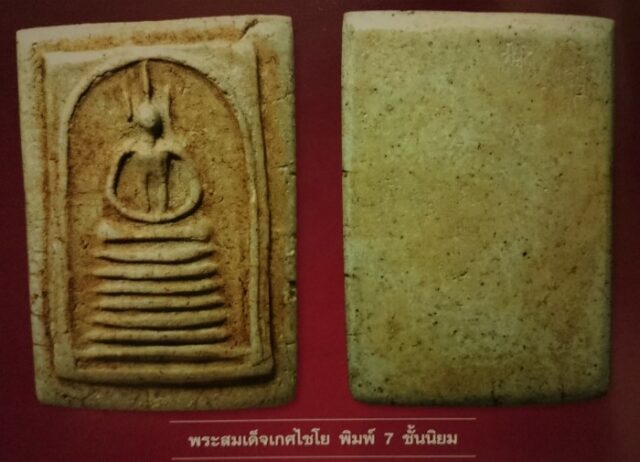
Significance and Legacy
The Pra Somdej amulets of Somdej Toh are more than just religious artifacts; they are symbols of faith, protection, and spiritual power. Each amulet carries with it the legacy of Somdej Toh’s immense spiritual influence and the sacred rituals that imbued them with their power. The amulets are part of the national heritage of Thailand and continue to be highly valued by collectors, devotees, and practitioners of Thai Buddhism.
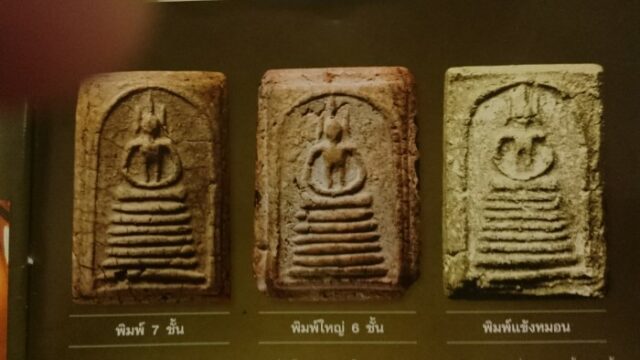
The meticulous creation process, the sacred materials used, and the extensive rituals performed to bless these amulets contribute to their revered status. They are not only seen as protective talismans but also as connections to the divine and the teachings of the Buddha. The amulets from Wat Rakang, Wat Bang Khun Prohm, and Wat Gaes Chaiyo each have their unique characteristics and histories, but all share the common thread of Somdej Toh’s spiritual legacy.

The Pra Somdej amulets from Wat Rakang, Wat Bang Khun Prohm, and Wat Gaes Chaiyo are deeply embedded in the spiritual and cultural fabric of Thailand. They represent the pinnacle of Thai amulet craftsmanship and the profound spiritual influence of Somdej Pra Puttajarn (Dto) Prohmrangsri. These amulets continue to be cherished for their historical significance, spiritual power, and the deep sense of connection they provide to the Buddhist faith and Somdej Toh’s enduring legacy.
